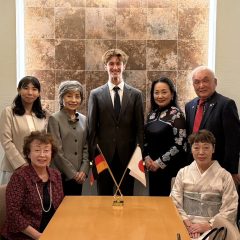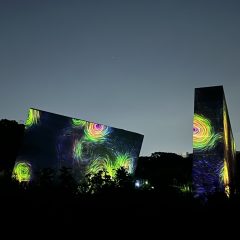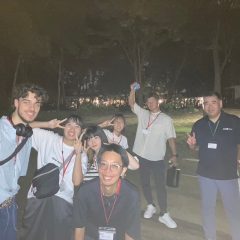☆☆☆Second report of Daniel Gottstein, 25th scholar of GRÜNWALD STIFTUNG☆☆☆
- Scholarship Report – Daniel Gottstein
Two more eventful weeks in Japan have passed, during which I was able to learn a great deal and noticed several distinctive aspects of Japan in the following areas: welcoming culture, writing & language, cityscape, and habits.
- Welcoming Culture
What I initially thought to be lucky coincidences has been happening far too often to call it that anymore: I am met with genuine interest and openness everywhere I go. In several cafés, lively conversations developed with the owners despite the existing language barrier. They were eager to teach me new Japanese words. In one café, the owner’s daughter even came by specifically to help translate with her English and spent several hours talking with me.
Another example is a running club that welcomed me with enthusiasm. All members had been informed beforehand that I would join, and they took turns talking to me. Afterwards, I was encouraged multiple times to come back again.
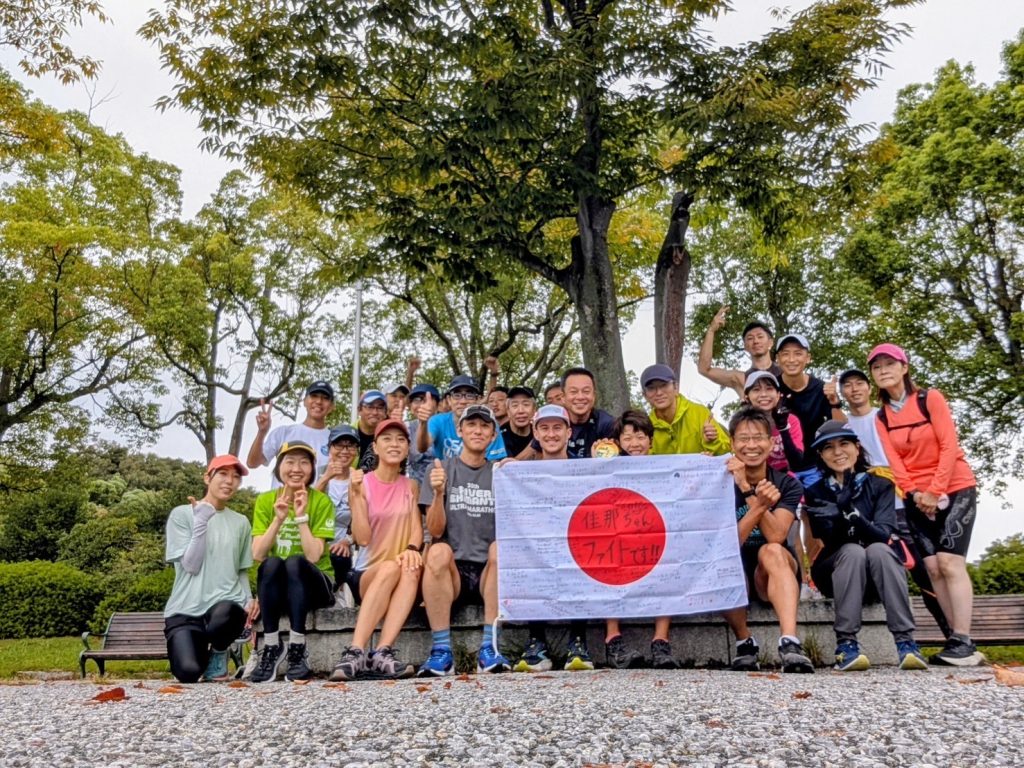
At an event raising money for fighting polio, I was immediately taken by the hand and and included by various members of the Rotaract youth organization. Whenever I found myself alone for a moment, someone would instantly come up to me and engage me in conversation.
Throughout all these experiences, a question and concern kept resurfacing: how must it be the other way around—for a Japanese person in Germany? Someone used to such warmth, potentially confronted with xenophobia and reservation…
- Writing & Language
Thanks to the patient teaching of my Japanese teacher, Okamoto-san, deciphering the Hiragana alphabet has transformed from complete overwhelm into delightful puzzle-solving. However, even three months of language lessons will not be enough to truly be able to read Japanese. With 2,600 characters in active use and more than 12,000 Kanji overall, I was told that even Japanese people must consult a dictionary now and then.
Also fascinating is the digital smartphone keyboard, which unites all three writing systems. I still haven’t fully grasped how Kanji and Katakana function here, but Hiragana characters are grouped into ten sets. With a single tap and swiping in four directions, you (usually) get five possible selections for each group. The speed at which people type on these keyboards is impressive.
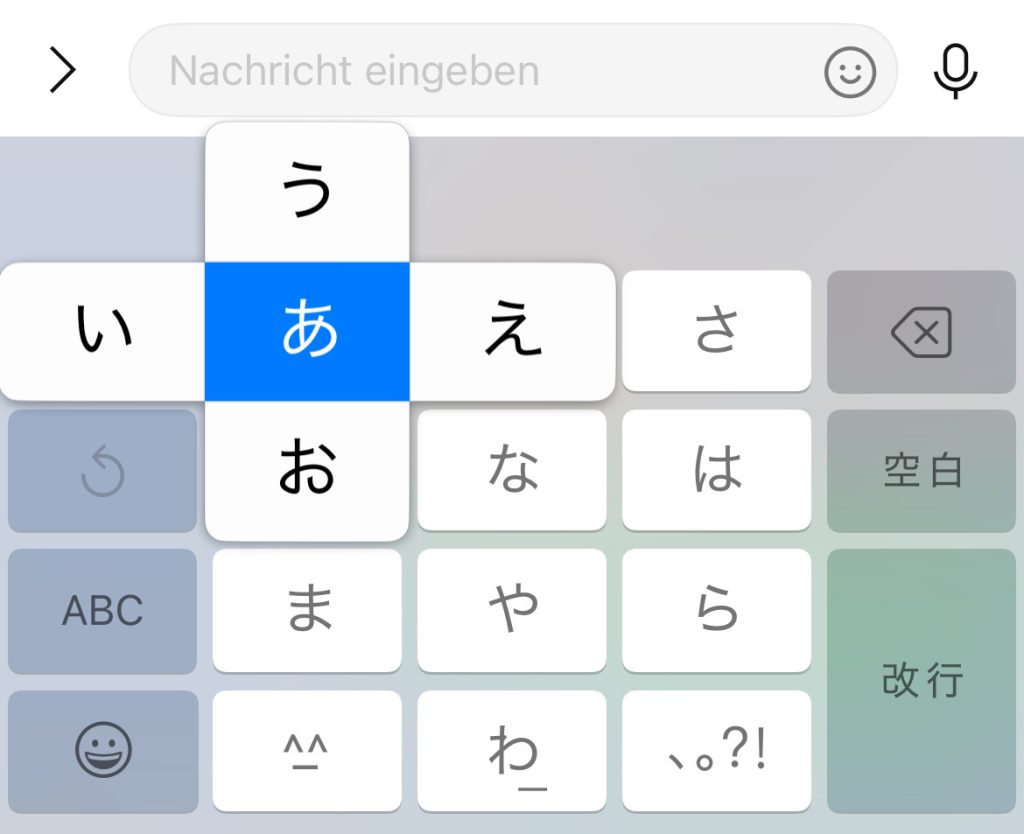
The language has declensions like German, but no conjugations—only tense and formality cause verbs to change. One thing I particularly like is that obviously green objects, like unripe apples or traffic lights, are described as blue. “Blue” is shorter in Japanese and therefore more efficient—and it forces a bit of thinking along the way.
- Cityscape
Besides the pedestrian-friendly infrastructure, the sheer number of vending machines truly stands out to me. In almost every small village there is at least one, and in busy hotspots sometimes up to six at once. They seem to be treated with respect, as most are in immaculate condition. Unofficial estimates speak of 5.5 million vending machines nationwide, which would equal one machine for every 23 inhabitants. Whether or not that number is perfectly accurate, it certainly illustrates the sheer magnitude and their influence on the cityscape. Attached is a small selection of photos—with the requirement to capture at least two vending machines standing side by side (for which one could probably gather enough material in a single day).
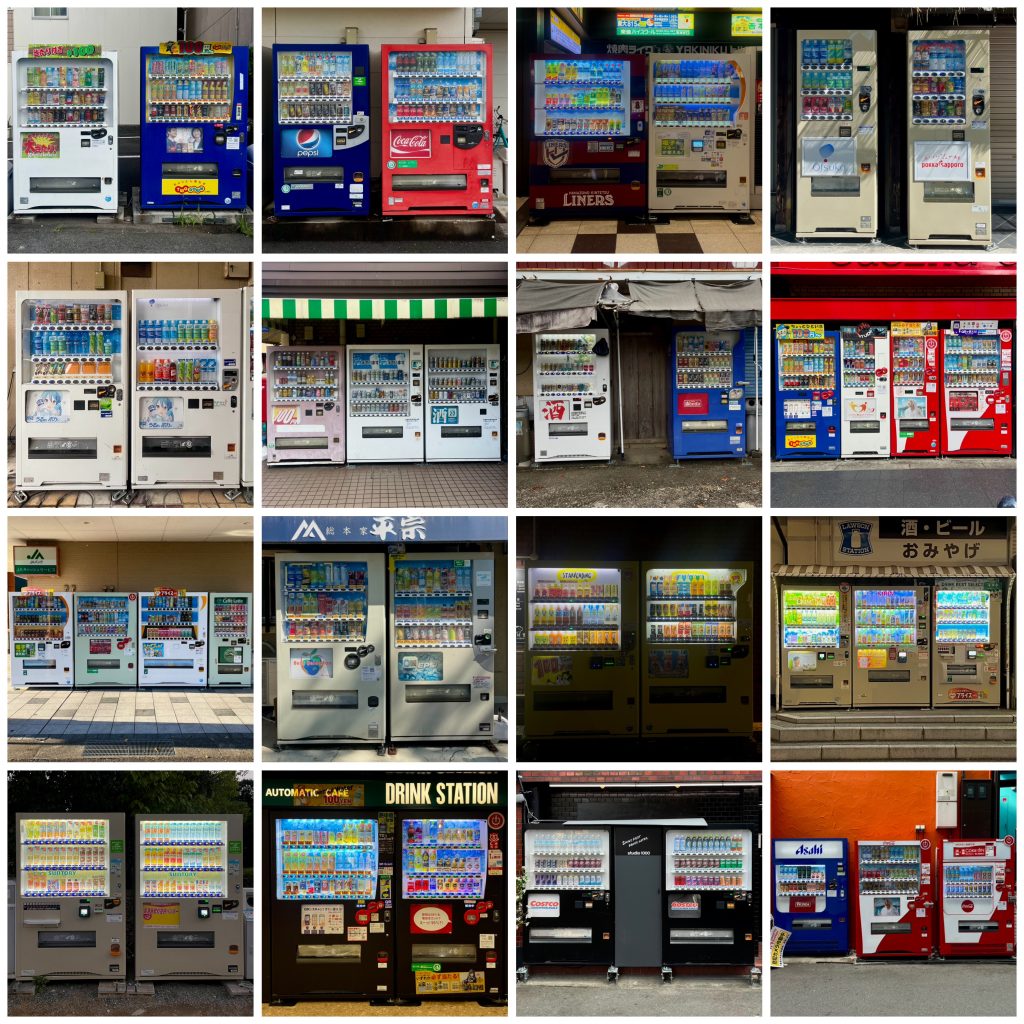
A bit less common, yet just as striking to me because I believed them nearly extinct, are public clocks. Very tastefully designed, they appear in the most varied places and have become a defining part of the cityscape in my eyes. Another small sample is included here:
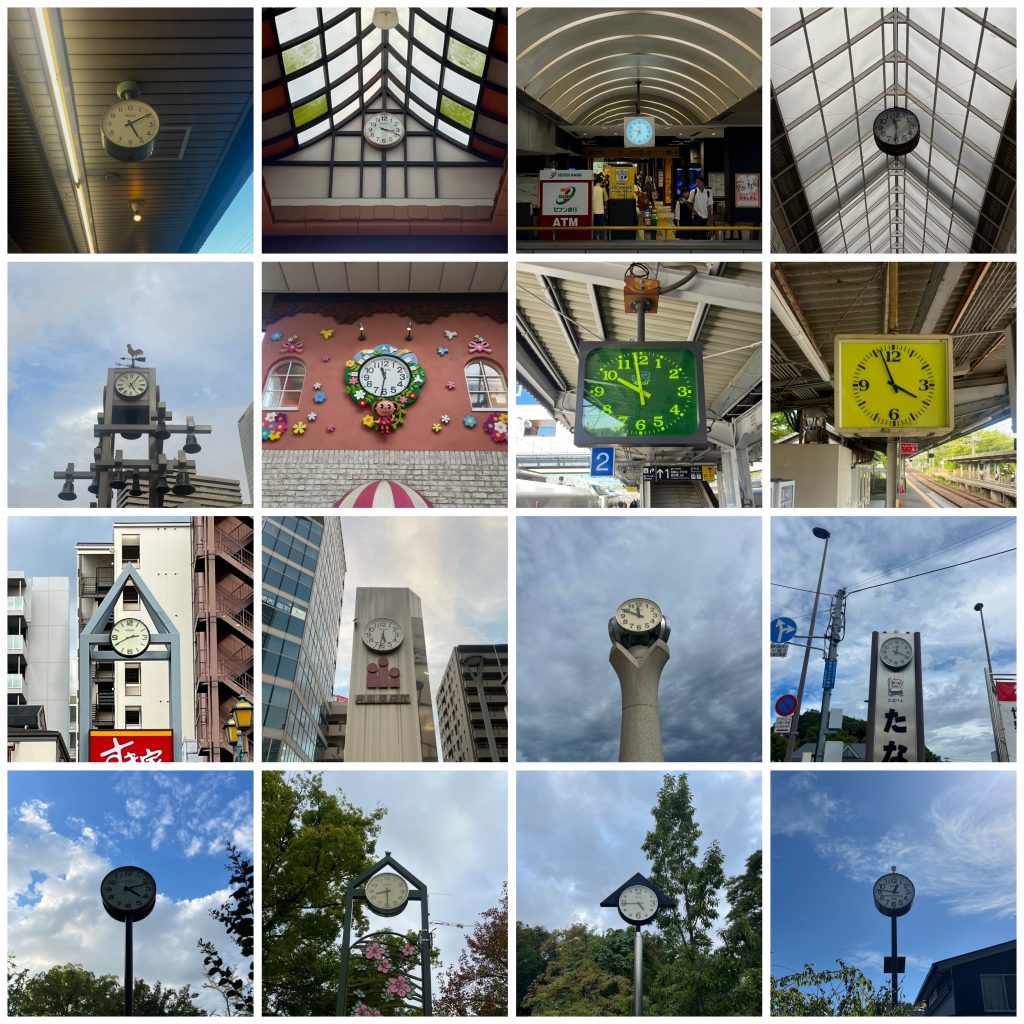
- Habits
Business cards are a must in Japan. I admit, I was surprised when Mr. Okamoto sent me a draft of my own business card beforehand. Having already distributed half of the printed cards, it now makes perfect sense. It is considered polite to always give and receive them with both hands—yet at the same time it is also a practical exchange of contact information. Even though less frequently, the younger generation also uses them.
I have been asked several times about my blood type. Apparently, it allows for conclusions about one’s personality. It seems comparable to zodiac signs, which are more commonly referenced in Germany.
I knew that anime was widespread, but I underestimated the scale. The fan community is huge, and on trains you are very likely to see anime videos on people’s phones—not necessarily films, but also short clips in reel or TikTok format. In shorter conversations, such as one I had with a salesperson in a vintage shop, the question of my favorite anime came up quite quickly.
I am very much looking forward to many more impressions and experiences in this wonderful country.

